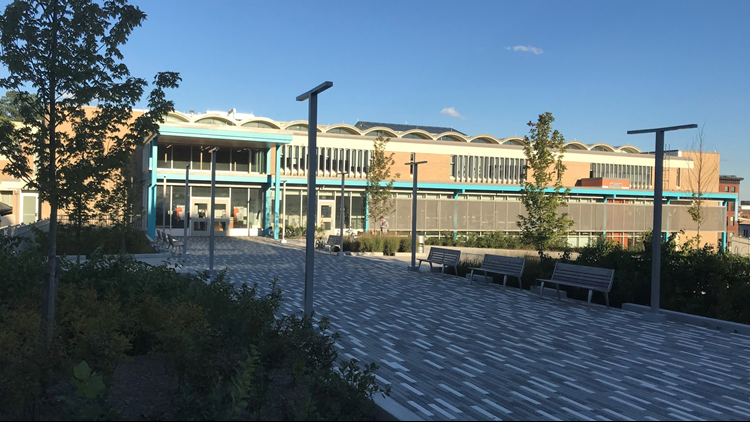WASHINGTON (WUSA 9) -- With school shootings the new “normal” in America, districts across the nation are struggling with how best to protect students if something similar happened in their community.
And although there are lots of ideas, there is no clear-cut road map on how to best keep kids safe.
“One of those things we’ve learned about is delay tactics,” said Jenine Kotob Architectural Designer at Quinn Evans. In 2015, Kotob helped redesign 40-year-old Marie Reed Elementary School in Washington, DC.
Kotob’s team helped transforming the once fortress like building into a bright, open, and more secure school, replacing brick walls with windows for better sight lines of people outside. And keeping the school building set far back from the street so security guards have time to see who’s approaching.
If a shooter ever did make it through that first layer of defense, classrooms are equipped with doors that lock from the inside. And corners for students to hide in that can’t be seen from the hallway.
“And so, if there was a threat or an intruder, they would walk and see that there is nobody in that classroom, the lights are off, and they would continue walking past,” Kotob said.
Kotob even added doorways that can serve as escape routes if the class ever did have to run.
“In the last 20-30 years there’s been a lot of research that has happened after Columbine and Virginia Tech,” Kotob said. “And we’ve learned a lot.”
It is because of what happened at Virginia Tech that Kotob has a tragic connection to school shootings and a personal motivation to fix this. She was a student there on April 16, 2007 when Seung-Hui Cho shot 49 people, killing 32 of them, including Kotob’s close friend Reema Samaha.
“And that’s when I decided that schools would be a focus for me,” Kotob said.
Hardening schools, or adding layers of defense against school shooters, is a focus right now for school districts across the country. Last March, a 17-year-old Great Mills High School student in St. Mary’s County opened fire in a hallway killing one classmate and injuring another before turning the gun on himself.
In October, social media posts threatening violence at schools in Manassas, Virginia and Montgomery County, Maryland once again had police on alert.
Hoping to prevent more tragedies, the state of Maryland has set aside $20 million in grant money to beef up security against potential school shooters.
“This is one of the most important things we are going to do, today,” said Dr. Karen B. Salmon, State Superintendent of Maryland Schools.
But at an August meeting of Maryland’s Interagency Committee on School Construction, which will award the grants, deputy director Joan Schaefer said she couldn’t find any hard evidence on what kinds of improvements schools should be spending the money on. Leaving the committee to do its best, to come up with a list on its own.
“There is an abundance of information out there,” Schaefer said. “But we found no empirical evidence that supported universal facility attributes that could be considered valuable to protect students and staff from or during a shooting event. And that could be used to perform uniform facility risk assessments.”
The American Institute of Architects is trying to change that.
“We’ve heard from many local and state officials who are googling frankly after a school shooting or some type of violence in schools occurs. What do we do?” said Jim Brewer, AIA’s Managing Director of Government Affairs and Policy.
AIA is pushing legislation on Capitol Hill that would free up new funding to make it easier for school districts to work with architects like Kotob, who could help them figure out the best approach.
Maybe more important, AIA also wants the federal government to create the first ever clearinghouse for school architecture and safety plans. It would be a federal repository of sorts for anti-shooter school design, so groups like the Maryland’s Interagency Committee on School Construction would have somewhere to turn for guidance, other than google.
“The recognition that columbine happened in 1999 and we’re almost 20 years later and that school officials do not have the funding nor the access to credible information from one repository, is disturbing,” Brewer said.
And possibly dangerous.
“You’re only as successful as the knowledge you have access to,” Kotob said. “Visibility. Transparency. Those are things that give you power and control over a potential threat.”
Especially at a time when no one knows where or when the next threat will be.
The American Institute of Architects hopes to formally introduce legislation creating the repository for safe school design in early 2019. The bill increasing funding for schools to work with architects is already working its way through Congress.



